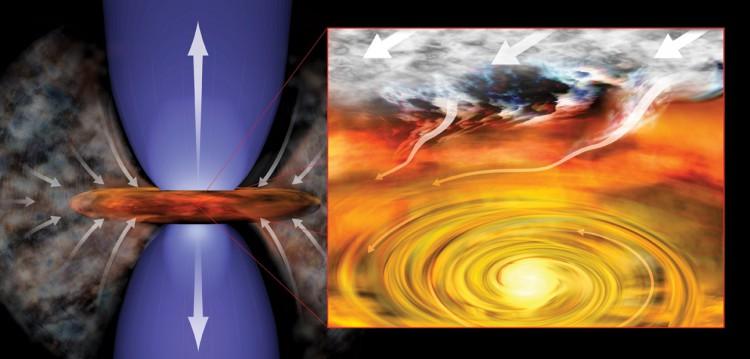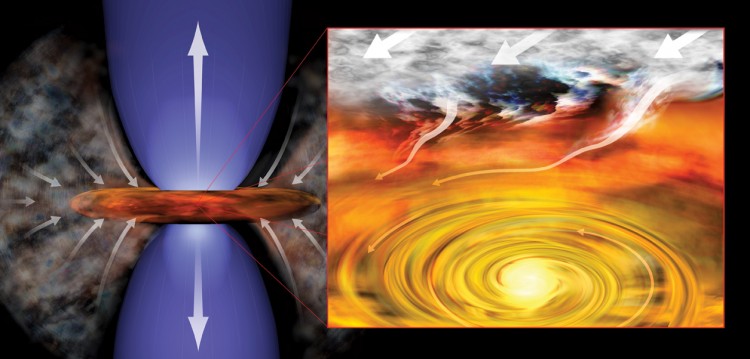Astronomers have found a brand-new star in the center of a rotating disk of gas and dust, the youngest solar system ever found.
The star, named L1527 IRS, is located over 450 light-years away in the constellation of Taurus, and is only 300,000 years old. By comparison, our sun is 4.6 billion years old.
“This very young object has all the elements of a solar system in the making,” said John Tobin, a scientist from the National Radio Astronomy Observatory (NRAO), in a press release.
“It may be even younger, depending on how fast it accumulated mass in the past.”
Tobin and his colleagues measured the infant star and found that it is about one-fifth the mass of our sun. After it pulls in more material and becomes larger, it will probably reach our sun’s size.
The swirling disk around the star contains enough material for seven Jupiters. The researchers found that the disk is rotating in the right pattern for forming planets.
“This is the youngest protostar found thus far to show that characteristic in a surrounding disk,” Tobin said. “In many ways, this system looks much like we think our own solar system looked when it was very young.”
The astronomers will use a new telescope in Chile, the Atacama Large Millimeter/Submillimeter Array (ALMA), to observe the young solar system after the telescope is completed.
“ALMA’s advanced capabilities will allow us to study more such objects at greater distances,” said Tobin.
“With ALMA, we will be able to learn more about how the disks form and how quickly the young stars grow to their full size, and gain a much better understanding of how stars and their planetary systems begin their lives.”
The research was published in the journal Nature in the Dec. 6 issue.
The Epoch Times publishes in 35 countries and in 19 languages. Subscribe to our e-newsletter.






